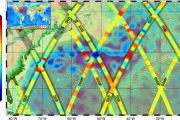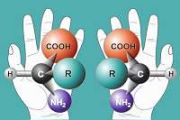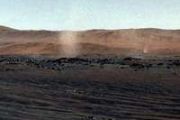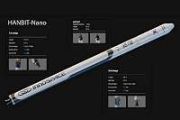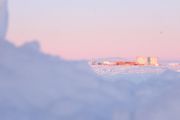
Copernical Team
Shenzhou XV astronauts take their first spacewalk
 Shenzhou XV mission crew members have just concluded their first spacewalk, according to the China Manned Space Agency. The agency said in a news release early on Friday morning that mission commander Major General Fei Junlong and Senior Colonel Zhang Lu completed a seven-hour spacewalk and returned to the Wentian science module at 12:16 am (Beijing Time). The third crew member, Senior Colonel D
Shenzhou XV mission crew members have just concluded their first spacewalk, according to the China Manned Space Agency. The agency said in a news release early on Friday morning that mission commander Major General Fei Junlong and Senior Colonel Zhang Lu completed a seven-hour spacewalk and returned to the Wentian science module at 12:16 am (Beijing Time). The third crew member, Senior Colonel D MDA secures new contract to supply Ka-band multibeam antennas for Argentina's ARSAT-SG1 Satellite
 MDA Ltd. (TSX: MDA), a leading provider of advanced technology and services to the rapidly expanding global space industry, has announced a new contract award to design, build and supply all of the Ka-band multibeam antennas for the ARSAT-SG1 satellite. ARSAT is Argentina's national telecommunications company and ARSAT-SG1 will provide high-speed internet as well as digital video and voice servi
MDA Ltd. (TSX: MDA), a leading provider of advanced technology and services to the rapidly expanding global space industry, has announced a new contract award to design, build and supply all of the Ka-band multibeam antennas for the ARSAT-SG1 satellite. ARSAT is Argentina's national telecommunications company and ARSAT-SG1 will provide high-speed internet as well as digital video and voice servi AST SpaceMobile announces collaboration with Zain KSA
 AST SpaceMobile, Inc. (NASDAQ: ASTS), has announced a non-binding memorandum of understanding with Zain KSA, a leading telecommunications operator in Saudi Arabia. The signing took place at the international LEAP 2023 Tech Conference in Riyadh.
The MoU would enable AST SpaceMobile and Zain KSA to collaborate towards new telecom solutions and satellite-based digital services in Saudi Arabia
AST SpaceMobile, Inc. (NASDAQ: ASTS), has announced a non-binding memorandum of understanding with Zain KSA, a leading telecommunications operator in Saudi Arabia. The signing took place at the international LEAP 2023 Tech Conference in Riyadh.
The MoU would enable AST SpaceMobile and Zain KSA to collaborate towards new telecom solutions and satellite-based digital services in Saudi Arabia NASA turns to AI to design mission hardware
 Spacecraft and mission hardware designed by an artificial intelligence may resemble bones left by some alien species, but they weigh less, tolerate higher structural loads, and require a fraction of the time parts designed by humans take to develop.
"They look somewhat alien and weird," Research Engineer Ryan McClelland said, "but once you see them in function, it really makes sense."
Spacecraft and mission hardware designed by an artificial intelligence may resemble bones left by some alien species, but they weigh less, tolerate higher structural loads, and require a fraction of the time parts designed by humans take to develop.
"They look somewhat alien and weird," Research Engineer Ryan McClelland said, "but once you see them in function, it really makes sense." HETDEX reveals galaxy gold mine in first large survey
 Astronomers have barely scratched the surface of mapping the nearly endless stars and galaxies of the heavens. Using supercomputers, researchers with The University of Texas at Austin have has now revealed the locations of more than 200,000 new astronomical objects. Their goal is to map even more and use that knowledge to predict the ultimate fate of the universe.
The Hobby-Eberly Telescop
Astronomers have barely scratched the surface of mapping the nearly endless stars and galaxies of the heavens. Using supercomputers, researchers with The University of Texas at Austin have has now revealed the locations of more than 200,000 new astronomical objects. Their goal is to map even more and use that knowledge to predict the ultimate fate of the universe.
The Hobby-Eberly Telescop NASA's NuSTAR reveals hidden light shows on the Sun
 Even on a sunny day, human eyes can't see all the light our nearest star gives off. A new image displays some of this hidden light, including the high-energy X-rays emitted by the hottest material in the Sun's atmosphere, as observed by NASA's Nuclear Spectroscopic Telescope Array (NuSTAR). While the observatory typically studies objects outside our solar system - like massive black holes and co
Even on a sunny day, human eyes can't see all the light our nearest star gives off. A new image displays some of this hidden light, including the high-energy X-rays emitted by the hottest material in the Sun's atmosphere, as observed by NASA's Nuclear Spectroscopic Telescope Array (NuSTAR). While the observatory typically studies objects outside our solar system - like massive black holes and co JUICE's final take-off before lift-off
 The Airbus-built JUICE spacecraft is set to embark on a pioneering mission to explore the Jupiter system and study its magnetic fields. The decade-long mission, managed by the European Space Agency (ESA), will search for signs of life-bearing conditions on the Jovian moons, Ganymede, Europa, and Callisto.
These moons have long been of interest to scientists and researchers due to their pot
The Airbus-built JUICE spacecraft is set to embark on a pioneering mission to explore the Jupiter system and study its magnetic fields. The decade-long mission, managed by the European Space Agency (ESA), will search for signs of life-bearing conditions on the Jovian moons, Ganymede, Europa, and Callisto.
These moons have long been of interest to scientists and researchers due to their pot CAPSTONE mission demonstrating utility and resilience at the Moon
 The CAPSTONE spacecraft continues to operate at the Moon and the vehicle is happy and healthy. The mission has accomplished 4 mission objectives and is making progress on additional objectives. Two mission objectives were completed during the transfer to the Moon and both directly informed Artemis 1 secondary payloads with regard to radio and ground station performance.
The system has been
The CAPSTONE spacecraft continues to operate at the Moon and the vehicle is happy and healthy. The mission has accomplished 4 mission objectives and is making progress on additional objectives. Two mission objectives were completed during the transfer to the Moon and both directly informed Artemis 1 secondary payloads with regard to radio and ground station performance.
The system has been NASA's ESCAPADE mission headed to Mars in 2024 on Blue Origin's New Glenn
 Blue Origin, LLC of Kent, Washington, has been contracted by NASA to launch the Escape and Plasma Acceleration and Dynamics Explorers (ESCAPADE) mission through their Venture-Class Acquisition of Dedicated and Rideshare (VADR) program.
Blue Origin, founded by Jeff Bezos, thus far, has only conducted suborbital flights using its New Shepard rocket, known for sending celebrities and space to
Blue Origin, LLC of Kent, Washington, has been contracted by NASA to launch the Escape and Plasma Acceleration and Dynamics Explorers (ESCAPADE) mission through their Venture-Class Acquisition of Dedicated and Rideshare (VADR) program.
Blue Origin, founded by Jeff Bezos, thus far, has only conducted suborbital flights using its New Shepard rocket, known for sending celebrities and space to NASA conducts first 2023 test of redesigned SLS rocket engine
 NASA's newly redesigned RS-25 engine for future flights of the Space Launch System (SLS) rocket, underwent its first hot fire test of the year on Feb. 8 at the agency's Stennis Space Center near Bay St. Louis, Mississippi.
The series of testing supports production of new RS-25 engines by lead SLS engine contractor Aerojet Rocketdyne. The new engines will help power future Artemis missions
NASA's newly redesigned RS-25 engine for future flights of the Space Launch System (SLS) rocket, underwent its first hot fire test of the year on Feb. 8 at the agency's Stennis Space Center near Bay St. Louis, Mississippi.
The series of testing supports production of new RS-25 engines by lead SLS engine contractor Aerojet Rocketdyne. The new engines will help power future Artemis missions 


